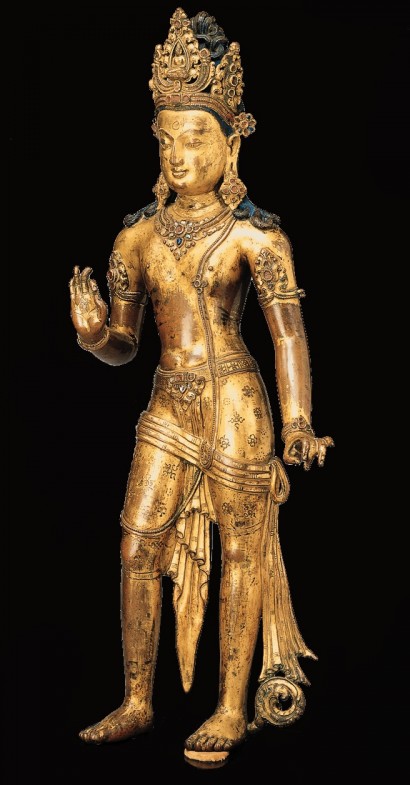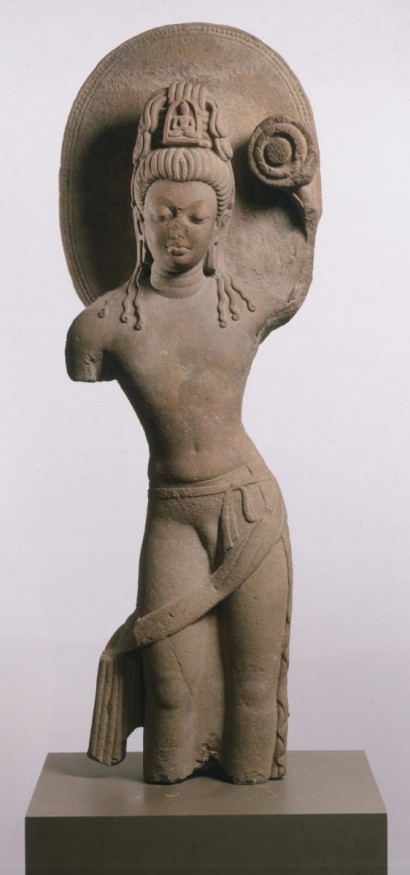Nepal, Transitional period, late 10th–early 11th century; gilt copper alloy with inlays of semiprecious stones; 26 3/4 x 11 1/2 x 5 1/4 in.; Asia Society, New York, Mr. and Mrs. John D. Rockefeller 3rd Collection, 1979.47, photo: Susumu Wakisaka, Idemitsu Museum of Arts, Tokyo, Courtesy of Asia Society, New York.
Avalokiteshvara
Bodhisattva of Compassion, India, Uttar Pradesh, Sarnath, Gupta dynasty, ca. third quarter of the 5th century; sandstone; H. 48 1/2 in.; Philadelphia Museum of Art, Stella Kramrisch Collection, 1994, 1994-148-1, photo: www.philamuseum.org.
The representation of bodhisattvas in Indian Buddhist art evolved over many centuries. At first, these figures appeared merely as anonymous attendants to Buddha Shakyamuni. But the Gupta period (ca. 320-550 CE) marked significant developments, both in the style and status of bodhisattvas. During this era, Avalokiteshvara became an independent focus of veneration. His representations exhibit naturalistic proportions and the elegant triple-bend pose, as seen in this stone sculpture from Sarnath. In addition, an icon of Amitabha adorning his crown became an identifying feature. Although of different materials and significantly more elaborate, the Nepalese sculpture displays the lasting influence of the Indian stylistic and iconographic heritage.





